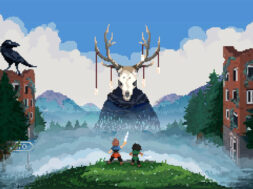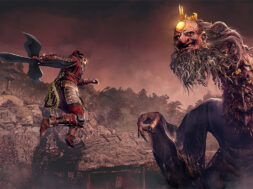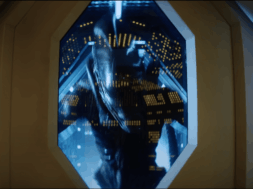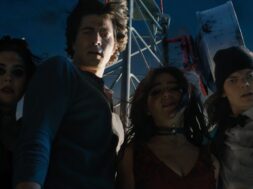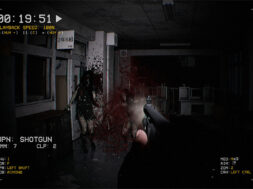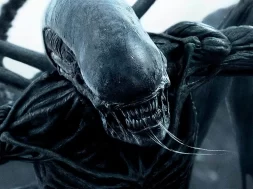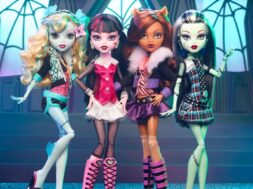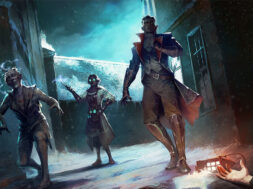Resident Evil 2 is a scary game. It wants the player to think that it is a scary game and it wants to succeed in instilling fear into the player. From the start, it attempts to do so by placing the player in areas they are unfamiliar with—foreign subjects interacting with objectively foreign spaces—and by instilling in the player the notion that they are weak, zombies are strong, and that avoiding conflict is a keen tactical maneuver. Restraint itself can become a weapon in the player’s ever-expanding toolset. Yet, what does the player do when they are stuck with nowhere to go? Better yet, what does Leon Kennedy do when he is at his weakest and most vulnerable?
Once Leon arrives at the Raccoon City police station, his journey genuinely begins. The station itself is a labyrinthine building that seems to be designed as a cruel joke against directional and architectural norms. Luckily, Leon has a map to guide his way through this living hell. This map takes Leon to and fro as he explores this new and menacing environment. Exploration continues, doors are opened, bullets are fired, zombies die (eventually), and then Leon finds himself at a mechanized door. The door is obviously busted, as bent metal gives way to gnarled and warped wires that spit static sparks into the air. On the other side of this door lies safety, the main hall—the only area where Leon is (relatively) safe in the opening hours of Resident Evil 2.
The Return of Two Classics in Two Different Ways
In a sense, this door is a Rubicon—the barrier between life and death, a doorway to better potentialities. It is a blockage between literal light and dark. There is some room under the door and Leon deems it enough space for him to try and crawl under. The game wrestles control from the player, as a cutscene begins. The camera pulls in close over Leon’s shoulder as he kneels down and begins to shimmy his way under the tight space between the bent and broken door, and the floor. The camera pulls in even closer and only focuses on Leon’s struggle, and in doing so the ever-present sense of claustrophobia manifests itself as Leon’s struggle under the door takes a turn for the worst. He is not alone in his plight.

A hungering zombie appears behind his feet as he still struggles under the door, and the camera glides towards Leon’s face as he realizes the danger he is really in. Though the cutscene takes control away from the player, the cutscene plays out as if the player is still in control, is still subsumed into this world through Leon’s perspective. His face writhes into a portrait of sheer terror and desperation as he begins to wiggle faster and more desperately for freedom, like a mouse in a trap who knows their time left to live is slim at best. The zombie moans and howls and chomps at Leon’s heels and eventually, through sheer will and desperation (and a little help), Leon is freed from the claustrophobic horror that manifested between him, the door, and the floor. A momentary sense of security has been achieved, but at what cost?
A real, palpable sense of claustrophobic fear has just been felt in that scene between the door, the floor, Leon’s struggling body, and the persistent hunger of the epitomal zombie. But why is the moment so viscerally effective in scaring the player and knotting their stomach into a taut ball of dread? It is because it is relatable. We have all felt powerless before, and this scene works precisely because of the powerlessness on display. Leon is stuck between “a rock and a hard place”. His despair is made manifest in the broken door and the zombie, and his will to live is the only thing that keeps himself from being consumed by it. The fact that the scene deliberately wrestles control from the player further exemplifies the importance of powerlessness in order for such a display of claustrophobic fear to work.
Is Resident Evil 3 Next in Line For a Remake?
Being stuck in a single tight space, even for a short amount of time, usually elicits fear and the beginnings of a fight or flight mentality in people. And if not, it will at least fill the imagination with some rather haunting “what ifs?”. Well, at least it does for me. I’m not saying that if I got my arm stuck between my bedframe and my wall, that I’d 127 Hours myself, but like, my mind would probably lead to that hypothetical scenario as a coping mechanism. It could be worse. I could be Leon stuck between a door and the floor with a hungered zombie lapping at his feet. He is trapped.
In the moment, his freedom is still undecided. That is where the next layer of spatially aware fear kicks in. Cleithrophobia is the medical term for the fear of being trapped. Claustrophobia can induce it, but they are not entirely related. One can feel trapped in a wide-open, non-confined space. But it is when one feels trapped in a tight space that claustrophobia and cleithrophobia can overlap. The moment with Leon trapped under the door acutely synthesizes the fear and panic that accompanies both conditions in a profoundly unsettling way. Both conditions are often triggered by an anticipatory anxiety, that feeling we have to hold our breath or grip our controller tighter as Leon first works his way under the door because we, the player(s), have a likely idea of what will happen next.

The fear is brutally realized with the death of Edwards.
Consuming horror media conditions one when they should expect a scare. It is up to the object to choose whether to subvert or play in line with what the subject expects. The lack of escape from a tight space builds an expectation in the player that they should feel tense, rapped with dread, and the inclusion of the zombie into this equation only seeks to heighten the tension in horror, all while playing into the hands of the viewer and what they expect.
Leon vs. Claire: Who’s Campaign is Best?
Resident Evil 2 does not serve to subvert or heighten the survival horror genre as a medium, but it does want to engage with what can elicit fear. Cinema has often used tight, enclosed spaces and horrors just out of reach to get a specific reaction from the cinema viewer, but videogames rarely play with this motif. Outlast uses this tactic a handful of times, to varying degrees of success and the Metro series is built upon the tenants of claustrophobic dread. Yet, it does not engage with cleithrophobia.
That, precisely, is what makes the “crawling under the door” moment in Resident Evil 2 so, so effective. It chooses to engage with what it means to be a participant in horror, the power structures of control, and it delineates (through action) what differentiates claustrophobia and cleithrophobia, all while knowing that these conditions exist in Venn-diagram-like relationship. And the “crawling under the door” moment cements itself in the overlapping space between the two circles that are the panic and triggers that come part and parcel with the moments that trigger claustrophobic and cleithrophobic reactions.
